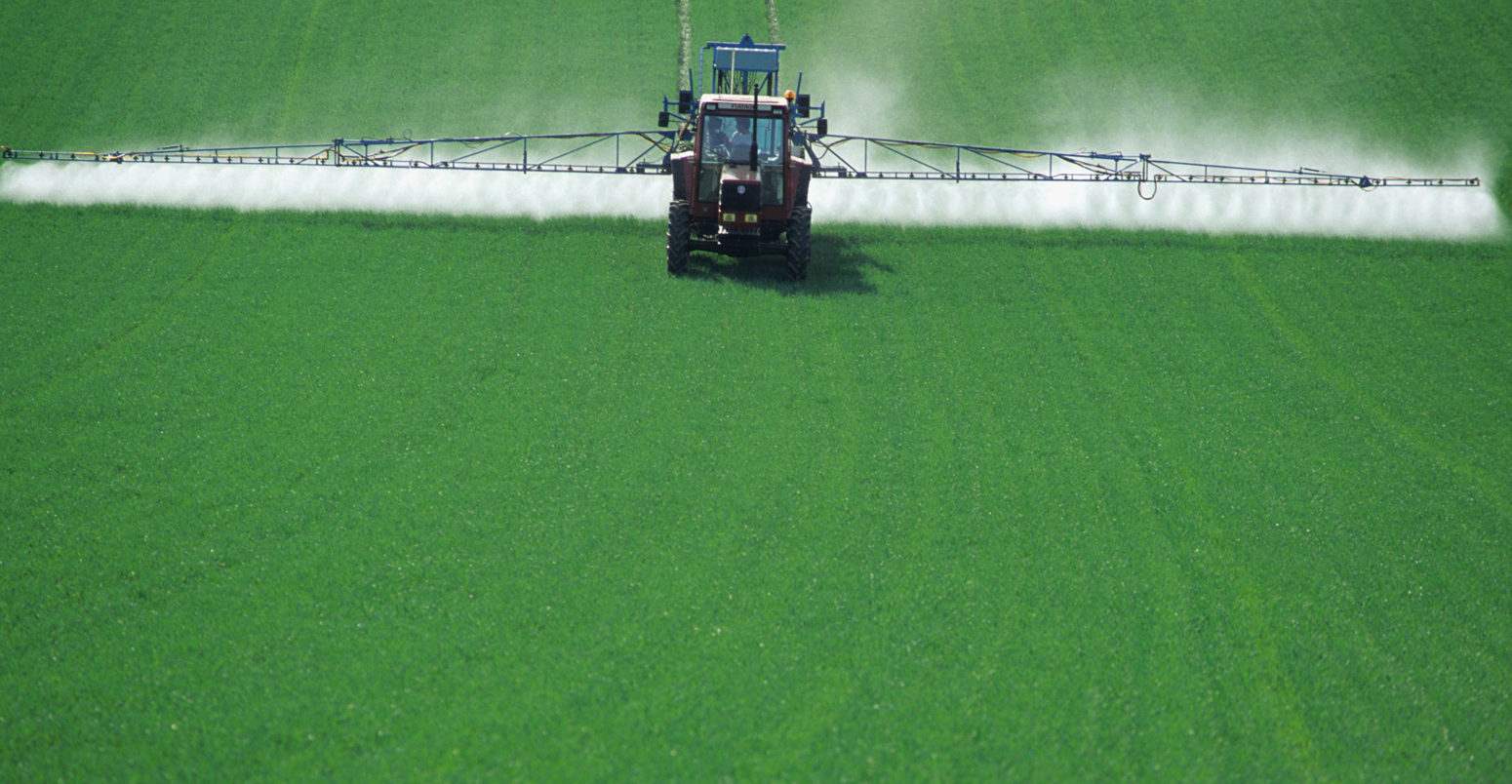
Q&A: Will EU Common Agricultural Policy reforms help tackle climate change?
Multiple Authors
06.28.21Multiple Authors
28.06.2021 | 4:25pmThe EU has come to the end of a three-year effort to reform its controversial farming subsidy programme, known as the Common Agricultural Policy (CAP).
Agriculture is responsible for at least a tenth of the EU’s greenhouse gas emissions and has been described as the “main driver of environmental degradation in Europe”.
This means that, as the bloc’s main farming strategy and the single largest part of EU spending, the CAP has significant potential to tackle climate change.
However, campaigners and scientists have warned for years that the policy has pumped funding into high-emitting livestock farms and unsustainable fertiliser use.
A recent review by official EU auditors found that the €100bn of CAP funds set aside for climate action between 2014-2020 so far have had “little impact” on emissions.
The new CAP rules, which will take effect on 1 January 2023, include some new environmental measures, but critics say the final text – which was agreed last Friday – is riddled with “loopholes” and is unlikely to bring significant change.
In this Q&A, Carbon Brief explains the potential role of the CAP in cutting emissions and what the newly agreed reforms entail.
- What is the CAP and why is it being updated?
- Why is the CAP important for cutting emissions in the EU?
- How successful has the CAP been in tackling emissions so far?
- What were the key climate-related battlegrounds in the CAP discussions?
- What are the reforms that have been agreed upon?
- How have climate experts and NGOs responded to the new CAP?
- What is the UK planning as a replacement for the CAP?
What is the CAP and why is it being updated?
The Common Agricultural Policy (CAP) was one of the first major policies enacted by the European Economic Community, the precursor to the EU. Created by the Treaty of Rome in 1958 and put in place in 1962, its aim was to increase the self-sufficiency of Europe’s food system and reduce shortages in the wake of the second world war.
The share of the EU budget that goes to the CAP has been steadily declining since the mid-1980s, as shown in the chart below. This decline is set to continue, but funding for the CAP will still make up about one-third of the EU budget during 2021-2027.
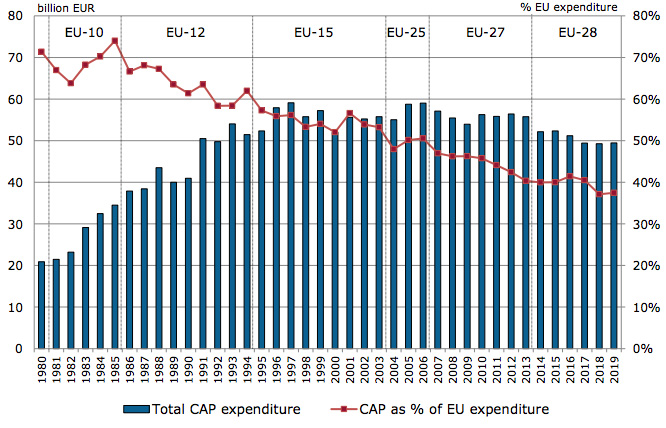
For the years 2021–2027, a total of €386.6bn has already been allocated to the CAP. This figure is inclusive of around an extra €8bn dedicated to rural development under the NextGeneration EU plan designed to aid recovery from the Covid-19 pandemic. These supplemental funds are part of the budget for the years 2021 and 2022. The just-agreed reforms will take effect on 1 January 2023.
The CAP is organised into two pools of funding, commonly known as the two “pillars”. The first pillar is the European Agricultural Guarantee Fund; the second is the European Agricultural Fund for Rural Development.
The first pillar encompasses about three-quarters of the CAP’s funding. The majority of this money – about 65% of the total CAP budget for 2021 – goes to income support for farmers. This income support is mostly in the form of “direct payments”, but also includes extra payments for using environmentally friendly farming practices.
The remaining funds in the first pillar are earmarked for market interventions, such as buying crop surpluses to preserve price stability.
The second pillar, added to the CAP under the “Agenda 2000” reforms, focuses on rural development. Its stated priorities are “fostering agricultural competitiveness”, “ensuring sustainable management of natural resources” and “achieving balanced territorial development of rural economies and communities”.
Compared to the money allocated under the first pillar, member states have much more flexibility in how they spend their second-pillar funding. It makes up 25% of the 2021 CAP budget.
The original iteration of the CAP “worked extremely well” in terms of increasing European food security, Dr Mark Brady, an agricultural and environmental economist at the Swedish University of Agricultural Sciences and Lund University, tells Carbon Brief. He adds:
“It really helped farmers to finance investments and to increase food production. But it had a best-before date…By the 1970s, [the CAP] had worked so well that the EU was even over-producing – producing far more food than could be consumed in Europe.”
In fact, reformers began clamouring for change soon after the policy was enacted. But, as a result of the growing over-production problem, true reforms to the policy began in the 1980s, such as the milk quota introduced in 1984 to reduce production of dairy products.
Reforms in the 1990s reduced the amount of support that was directly linked to production, but these were “relatively ineffective”, Brady says.
(For the most part, these reform attempts are linked to the seven-year budget cycle of the EU. Changes to the policy are proposed by the European Commission, but have to be agreed upon by the commission, the European Council and the European Parliament.)
Reforms that entered into force in 2005 majorly restructured support by “decoupling” payments from production. Under this “Single Payment Scheme” (or “Single Farm Payment”), farmers were no longer required to produce crops on unproductive land; instead, they could receive payments for maintaining the condition and quality of the land. This was the “most significant reform of the CAP to date”, Brady says. But, he adds, it still fell short:
“The 2005 reform had a fantastic effect. It really eliminated these huge production surpluses and the big trade problems. But it didn’t solve a lot of the environmental problems associated with agriculture.”
These subsidies were still paid out on a per-hectare basis, with payments varying based on the historical production levels of a given farm.
The most recent round of reforms, in 2013, aimed to improve on the changes made in 2005. These reforms evened out the per-hectare payments that farmers receive and introduced policies to “green” the CAP. (See: How successful has the CAP been in tackling emissions so far?)
But, today, the CAP still faces many of the same problems, says Pieter de Pous, a senior policy adviser at E3G, a climate-change focused thinktank.
Most of the funds set aside for direct payments go to a small number of large farms and the attempts to “green” the CAP have had little impact on the environmental impact of agriculture in the EU, de Pous says. He tells Carbon Brief:
“Every effort to set the budget for another seven years was part of a reform effort to try and align it with market realities, new challenges, sustainability and, of course, at some point climate…But what I think is important to flag is that every time they try to reform the system, it basically runs into the ground and very little changes in the end.”
For example, the per-hectare direct payment scheme leads to large subsidies to a handful of large farms, while small farms receive less money. (In 2019, 74% of direct payment funds went to just over 15% of EU farms.)
This latest set of reforms was supposed to further “green” the CAP and increase its effectiveness at producing “public goods”, says Dr Tim Benton, the director of the energy, environment and resources programme at thinktank Chatham House.
But this round of reforms began under the previous European Commission, which “didn’t have much of a green agenda at all”, de Pous says.
Calls by climate campaigners for the current commission to withdraw the proposal and replace it with a “greener” one were rejected by European Commission climate chief Frans Timmermans. (See: How could the reforms that have been agreed impact climate action?)
Because of the money and incentives involved, reforming the CAP in any real “green” way is inherently difficult, Benton tells Carbon Brief:
“We have developed a food system predicated on producing ever more calorie-rich food ever more intensively, driving down the price of food and making it economically rational to waste…This system is very entrenched as an important engine of economic growth, even though it is bad for people and the planet…Unlike the energy sector where it is possible to imagine selling more, but more renewable, getting food right implies selling less – and so, politically, it is all rather toxic to be ambitious.”
The establishment of the CAP was foundational to the formation of the European Economic Community and the farming lobby remains very powerful today. EU farmers have historically protested against attempts to reform the CAP or enact other policies that they see as harmful to their bottom lines.
Why is the CAP important for cutting emissions in the EU?
Agriculture in the EU – including the UK – emitted 435m tonnes of CO2 equivalent (MtCO2e) in 2018, around a tenth of the bloc’s total emissions. As the EU’s primary agricultural policy, the CAP is seen as vital for tackling these emissions.
The bloc’s overall emissions have fallen by nearly a quarter since 1990, while greenhouse gases from its farms have fallen by a fifth. Agricultural emissions have actually risen slightly over the past decade, as the chart below shows.
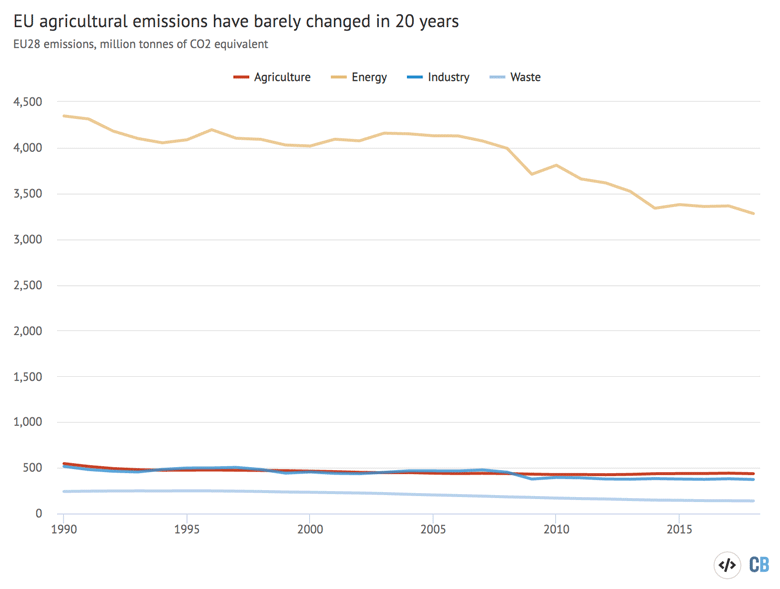
Emissions cuts that have taken place in the sector since 1990 have been attributed to increases in productivity, a decline in cattle numbers and improvements in European agriculture, such as more efficient use of inorganic fertilisers.
The sector is also indirectly responsible for large volumes of emissions from sources such as imported animal feed. One analysis concluded that the livestock sector alone could account for up to 17% of the EU’s total emissions footprint.
According to the agricultural emissions reported by the EU to the UN Framework Convention on Climate Change (UNFCCC), which exclude energy-related CO2 emissions from farms, 55% is methane from livestock and 43% is nitrous oxide from fertilisers and manure management.
Significantly cutting these emissions is challenging as they result from biological processes that are difficult to address or replace, but measures to cut fertiliser use or livestock numbers could have a significant impact.
Farmland can also store carbon – for example, in planted trees and grassland – and landowners could be incentivised to do this. (Owing to the way greenhouse gases are conventionally recorded, these emissions savings would not be described as “agricultural”, but would come under land use, land-use change and forestry – known as “LULUCF”.)
As it stands, however, EU agricultural land use is a net emissions source rather than a sink, releasing around 56MtCO2e in 2018 due to the way organic soils are managed and the conversion of grassland into crops, according to thinktank Germanwatch. This brings agriculture’s share of EU emissions up to 12%.
(The 56MtCO2e figure does not include the latest UK greenhouse gas inventory figures in which, due to improvements in the approach to calculating peatland emissions, the land sector swapped from being a sink to being a source.)
The CAP has the potential to address all of these areas, although, in practice, it has been criticised for failing to live up to this potential (See: How successful has the CAP been in tackling emissions so far?).
The EU has raised its overall climate ambition in recent months, aiming for net-zero greenhouse gas emissions by 2050 and “at least” a 55% reduction in emissions by 2030, compared to 1990 levels. The European Commission has said the new CAP will be aligned with the ambition of these targets as part of its “European green deal”.
Under existing policies, the commission expects all sectors to curb their non-CO2 emissions “significantly…with [the] notable exception of agriculture” in the coming decades. This can be seen in the chart below.
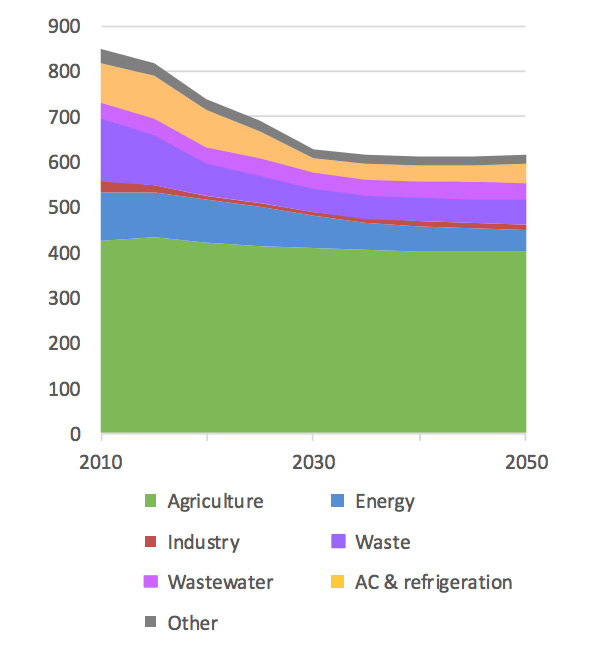
Commission modelling suggests that a combination of technical mitigation measures on farms and dietary changes, such as a shift away from meat, could cut the sector’s non-CO2 emissions from 430MtCO2e in 2015 to 230MtCO2e in 2050.
However, given its “restricted mitigation potential”, even in a “deep decarbonisation” scenario by 2050 agriculture is likely to make up “most of the remaining sources of EU greenhouse gas emissions”, according to the commission’s analysis.
Celia Nyssens, policy officer for agriculture at NGO the European Environmental Bureau, tells Carbon Brief that this acceptance of high emissions from agriculture is “very problematic”:
“It reflects the exceptionalism where for decades in EU policymaking, agriculture…has been kept outside of environmental policy, by-and-large.”
The impact assessment for the 2030 emissions target also concludes that agriculture is expected to be the single largest emissions source in the coming years, noting the need for CO2 removals to make up for it. However, it also emphasises the need to cut emissions where possible:
“Current policies need to be accompanied by ambitious implementation of the national CAP strategic plans, requiring member states to focus on increased environmental ambition. The absence of such ambition will result in a stagnation of non-CO2 emissions of the sector.”
How successful has the CAP been in tackling emissions so far?
In an outline of the CAP, the commission stated prior to the reform that it already offered “a number of instruments to find adequate answers to the challenges of climate change”.
It estimated that €104bn – 25% of the 2014-2020 CAP allocation – was “related to climate”. These climate-relevant policies included:
- A “cross-compliance mechanism”, which set basic environmental standards that farmers had to meet in order to receive subsidies.
- The “green direct payment” or “greening”, introduced in 2015, granted for implementing three compulsory practices: crop diversification, ecological focus areas and permanent grassland. This made up 30% of the direct payment budget.
- Climate action is also an important aspect of the European Agricultural Fund for Rural Development, which supports farm modernisation. Between 2014-2019, 21% of the fund went to voluntary schemes known as agri-environmental climate measures (AECMs), which encouraged “green” practices on farms, 9% to organic farming and 0.7% to Natura 2000 sites.
The first two measures were both compulsory parts of the CAP’s “first pillar”, whereas the rural development policy – the “second pillar” – left member states to come up with their own spending programmes and AECMs. (For more on how the CAP is structured, see: What is the CAP and why is it being updated?)
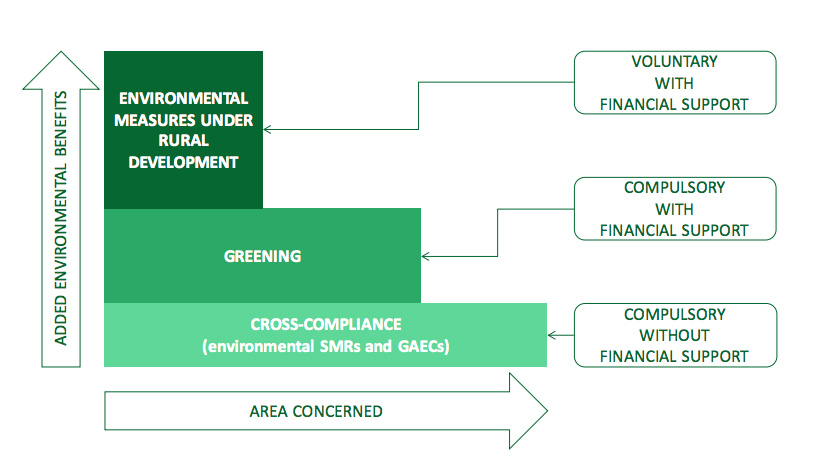
When these environmental measures were first introduced, the commission said they would make the CAP “better targeted, more equitable and greener”. However, many academics and NGOs have been highly critical of the CAP’s climate impact so far.
A briefing released by NGO coalition Climate Action Network (CAN) Europe at the end of 2020 stated that “the current CAP measures have not significantly contributed to the EU’s climate change mitigation and adaptation efforts and needs”.
This conclusion was supported by a special report from the European Court of Auditors (ECA) released just days before the final CAP negotiations were set to start. It found that, despite billions being spent on green practices, there had been “little impact” on emissions, with no funding to reduce livestock numbers or prevent peatland drainage.
CAN’s briefing said that the environmental standards of the cross-compliance mechanism “set a very low bar in terms of climate”, with no limitations on fertiliser use or livestock numbers.
Meanwhile, analysis suggests that less than 5% of the farmland that has benefited from “greening” direct payments has seen a change in agricultural practice.
An earlier report by the ECA concluded that the threshold for receiving green direct payments had been set too low and that “greening as currently implemented is unlikely to provide significant benefits for the environment and climate”.
Member states have been given some discretion in applying greening rules and they have taken advantage of this to “limit the burden on farmers and themselves” rather than to maximise climate benefits, according to the ECA report.
Among the potential AECMs that farmers could pick are measures with the potential to tackle emissions, such as maintaining grasslands and planting leguminous crops which can reduce the need for artificial fertilisers.
However, once again the flexibility that member states have been given has resulted in a general lack of action, as Prof Alan Matthews, a European agricultural policy researcher at the Trinity College Dublin, tells Carbon Brief.
“The CAP gives you a set of options, a set of interventions you can draw upon and design your programmes around, but it is up to the member states, ultimately, to decide what their priorities are and the evidence is…that actually very small allocations were made to climate action at the outset.”
The ECA found that the packages of measures offered to farmers in Greece, Spain, France, Poland and the Netherlands remained broadly unchanged from 2014-2020 compared to the previous period, in which green measures were not offered.
Also, while AECMs are thought to be effective when properly implemented, they have received a fraction of the funding that goes directly to landowners.
In the 2014-2020 round of CAP funding, direct payments were worth €40.4bn annually compared to the €3.5 bn that goes to AECMs, organic farming and Natura 2000 sites.
Nyssens tells Carbon Brief that while the commission tends to emphasise the “potential” of the CAP, this potential has largely failed to materialise:
“Every external independent evaluation and report has come to the same conclusion: indeed, there are some good instruments, but they are not used effectively…and member states are generally choosing the easy solutions and putting economic interests before environmental interests.”
What were the key climate-related battlegrounds in the CAP discussions?
The latest CAP reforms were first proposed by the European Commission in 2018, before the arrival of the bloc’s “green deal” and carbon neutrality target. Even so, the commission has emphasised that the two can go hand-in-hand.
The commission farm-to-fork and biodiversity strategies that have followed, as part of the green deal, both set out ambitious targets including reducing nutrient loss by 50% and chemical fertiliser use by 20% by 2030.
However, as Matthews tells Carbon Brief, while the original draft proposal from June 2018 included various stronger standards, over the course of negotiations “nearly all of those proposals have been watered down if not simply removed by the co-legislators”.
Dr Ana Frelih Larsen, a senior fellow at the Ecologic Institute who specialises in the implementation of the CAP, tells Carbon Brief that the majority of agricultural ministers on the Council of the EU, as well as farming lobbyists Copa Cogeca, have resisted increased environmental ambition.
According to Mattthews, “much of the foot dragging” on this issue comes down to its perceived impact on farmers’ incomes.
Meanwhile, environmental NGOs, including the climate activist Greta Thunberg and Greens in the European Parliament, have been pushing for more climate ambition under the CAP reforms, accusing EU leaders of “greenwashing”.
In March 2020 they were joined by more than 3,600 scientists who signed a letter saying they were “concerned about current attempts to dilute the environmental ambition of the future CAP and the lack of concrete proposals for improving the CAP in the draft of the European green deal”.
In an accompanying paper, the authors branded a commission claim that 40% of payments under the reformed CAP will be “climate friendly” as “misleading”. They wrote:
“These instruments are not systematically linked to any effective measure for greenhouse gas reduction or climate adaptation, thus lacking any justification of this statement. Instead, they even partly support practices and sectors with significant greenhouse gas emissions.”
The key focal points around climate change in the new CAP discussions concerned its “green architecture” – the underlying rules that govern how and when money is allocated to farmers.
Initially, the commission intended to enhance the “conditionality” of direct payments, meaning improved environmental standards would have to be met to receive money, compared to the previous cross-compliance and greening rules.
While existing standards are widely seen as ineffective (see: How successful has the CAP been in tackling emissions so far?), there was hope that this conditionality could be expanded to provide tighter protections for peatlands and grasslands, in particular.
However, over the course of negotiations these standards were progressively weakened. NGOs warned that this would result in CAP beneficiaries ploughing up land that should be acting as a carbon sink without losing their EU funding, for example.
Perhaps more significant was a shift from direct payments towards payments that actively reward farmers for improving ecosystem services.
This came in the form of newly developed “eco-schemes”, which fall under “pillar one” of the CAP and would see farmers receive higher payments if they meet additional environmental conditions. Crucially, these schemes were proposed to take a chunk of money from direct payments.
The commissions published a list of potential eco-schemes in January 2021, including organic farming practices, re-wetting peatlands and planting climate-resistant crops.
“Eco-schemes have been really brandished as the one reason this new CAP will be so great for the environment,” Nyssens tells Carbon Brief.
However, she says that, while they are a step in the right direction, the rules surrounding them have been left “extremely weak or vague so member states have full discretion in how they allocate that money and how high they set the level of ambition”.
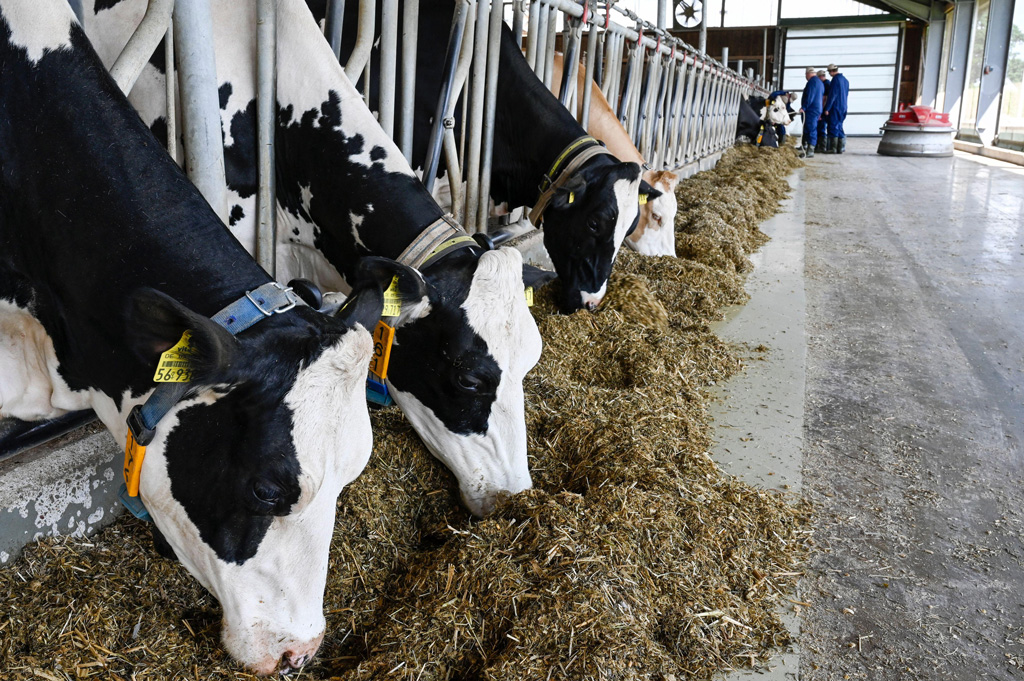
Additionally, NGOs have warned that not only are subsidies to high-emitting livestock farms set to continue under the new CAP, but eco-schemes could provide “hidden subsidies for factory farms” in the form of payments to improve animal welfare.
Matthews is more optimistic about the eco-schemes and other improvements. “We could be doing more, sure, we have a climate emergency…[but] there is progress, it’s just too slow,” he tells Carbon Brief.
Frelih Larsen says a wider issue is the lack of clear emissions targets for agriculture in the EU’s overall climate framework.
Instead, member states have targets to cut emissions from all sectors outside of the EU’s emissions trading system (ETS), which includes not only agriculture, but also transport, buildings and waste. In practice, this means agriculture could be left untouched.
“Without these clear targets there is less pressure for CAP to deliver,” she says.
Frelih Larsen adds that a lack of climate ambition emerging from EU-level negotiations would mean more comes down to the strategic plans for agriculture released by member states, giving Poland’s plan as an example of one that has already emerged with “too little ambition”.
What are the reforms that have been agreed upon?
The CAP reforms were meant to be finalised at the end of May 2021, but in the end they were pushed back another month after EU lawmakers initially failed to reach an agreement.
According to Politico, the earlier negotiations failed after a “skull-crunching head-to-head clash” between EU governments and members of the European Parliament over how much of the CAP should be spent on green measures.
The “trilogue” negotiations between the European Parliament, member state government representatives on the Council of the EU and the European Commission resumed in late June and a compromise on many of the key points was reached at around 1am on the morning of Friday 25 June.
Several ministers and members of parliament announced that a deal had been reached in principle by Friday evening, although the final reforms still need to be rubber-stamped by both the European Parliament and member states.
Several of the new reforms, which will go into effect from 1 January 2023, are focused on mitigating the climate and environmental impacts of agriculture. These include:
- “Eco-schemes”, where farmers are paid for taking actions that are beneficial to the environment – such as soil restoration or reduced pesticide use – will now make up 25% of the direct payment budget. The first two years after the CAP takes effect will be a “learning period”, where member states only have to commit 20% of the budget towards eco-schemes. For the remaining years, there will be a “floor” of 20%. Any money between 20-25% that the member states do not spend can be transferred to second pillar funding for other “green” measures.
- “Conditionality”, which replaces the cross-compliance mechanism and “greening” requirements, requires all farmers to maintain certain environment- and climate-friendly practices in order to qualify for direct support. While this covers the protection of grasslands, peatlands, buffer strips along rivers, soil cover, crop rotation and biodiversity spaces, Nyssens says “loopholes and exemptions” in the rules mean they will have little impact. This also means the 30% of direct payments that were previously awarded for “greening” are now unconditional, although these payments have partly been replaced by eco-schemes.
- Within the European Agricultural Fund for Rural Development – the CAP’s second pillar – 35% of the budget will go towards “environmental objectives”, covering AECMs, organic farming, Natura 2000 sites, environment-related investments and support areas with “natural constraints” (ANCs) for farming, such as mountainous regions. There are concerns that including ANCs in this funding could mean less money is spent on measures that bring actual environmental benefits.
The funding for eco-schemes was a major sticking point in the negotiations, with the European Parliament pushing for a mandatory 30% of the first pillar budget going towards such payments and the member states pushing for the mandatory level to be 20% instead.
Nyssens calls the final figure of 25% a “reasonable landing zone”. However, she adds, parties both in favour of and opposed to stricter green spending rules can find fault with the ultimate agreement. She tells Carbon Brief:
“Since the pot of money for eco-schemes is taken from the pot of money that was traditionally income support payments, it means a lot of farmers consider that this is their money and they shouldn’t have to do more for it – and a lot of member states kind of agree with that.”
The flexibility in eco-scheme funding means some countries may prioritise the ease with which farmers can access the funds, rather than real environmental change, Nyssen adds. She explains:
“That’s why we are so critical of eco-schemes…there is absolutely no guarantee that this will lead to change.”
The commission says it will have ultimate authority over how much funding will be permitted for various eco-schemes, but Nyssens says it will have its work cut out in reviewing all 27 member states’ draft strategic plans for CAP spending in a relatively short period of time.
In addition, member states will be permitted to decrease the amount of funding committed to eco-schemes if they spend more than 30% of their rural development funding on AECMs, in what has been labelled a “loophole”.
Other changes to the CAP focus on ensuring workers’ rights, supporting young farmers and the establishment of an agricultural crisis reserve fund.
The new CAP will also not place any caps on single-farm subsidies, a move that Thomas Waitz, an Austrian MEP, called a “missed chance to change the system”. Waitz, who is also a co-chair of the European Greens, said that “small farmers will not survive this way”.
Indeed, some have called for the abolition of direct payments entirely. Dr Guy Pe’er, a conservation biologist at the German Centre for Integrative Biodiversity Research and the Helmholtz Centre for Environmental Research, said in a press briefing following the CAP agreement:
“There is an elephant in the room, a very big one, which is called direct payments. Economists have been saying for a long time and demonstrating that this is a huge waste of money…The biggest losers from the CAP reform, or the lack of a CAP reform, are the farmers.”
Despite the various environmental conditions farmers have to meet to access direct payments, compromises on the rules mean it will largely be left up to member states to decide which farms qualify, potentially rendering the rules ineffective.
Environmental activists and NGOs had pushed for the new CAP to integrate the aims of the green deal. While the parliament did adopt amendments in that direction, these were ultimately scrapped from the deal.
The final reforms do include text that nods to the EU’s commitments under the green deal, but contain nothing that is legally binding. EurActiv reports that the text will read:
“When assessing the proposed CAP Strategic Plans, as referred to in Article 106, the Commission should assess the consistency and contribution of the proposed CAP Strategic Plans to the Union’s environmental and climate legislation and commitments.”
How have climate experts and NGOs responded to the new CAP?
Although EU agriculture commissioner Janusz Wojciechowski wrote on Twitter that the reform was “one of the most ambitious” in history, climate experts, activists and NGOs have been critical of the deal, with Greenpeace labelling it “a disaster for the climate, nature and small farms”.
Greenpeace EU’s agricultural policy director, Marco Contiero, wrote in a press release:
“When it comes to farming, the EU doesn’t listen to science, to small farmers or even to its own auditors, and has delivered a policy that only benefits land barons and the biggest agricultural players. This CAP deal largely keeps things as they are.”
Green MEP Thomas Waitz, who had been vocally opposed throughout the two days of negotiations last week, tweeted that “this is a shady deal” and that the eco-scheme compromises are “worse than before”.
ALL THE FEELS #CAPReform #FutureCAP #finalCAPdown #WithdrawTheCAP #CAPDeals pic.twitter.com/iGOZhWbMD2
— Thomas Waitz (@thomaswaitz) June 25, 2021
Frelih Larsen tells Carbon Brief that, as it stands, it looks “unlikely” that the CAP will deliver enough ambition on climate action in the EU:
“The absence of binding alignment with green-deal targets, the weakened definitions of GAEC [good agricultural and environmental condition of land] standards and many exemptions are very disappointing. This puts even greater pressure on the commission to ensure the ambitious implementation of remaining environmental provisions, especially around eco-scheme design, conditionality and AECMs.”
Matthews, on the other hand, highlights the potential of some of the outcomes, including eco-schemes, and says it will “now be up to member states to make use of these new tools in their national CAP strategic plans”.
Many experts note that by failing to act decisively on climate change and environmental protections, the CAP would ultimately end up hurting farmers. Pe’er said in a press briefing:
“The science shows very clearly that the greatest risks for food security come from the climate crisis and the biodiversity crisis. Combined, the fate of farmers and food security are completely dependent on the environment. Yet, the CAP fails on all frontiers and it continues to fail, not because there are not win-wins to find, but because there’s no political interest in that.”
Harriet Bradley, a senior agriculture policy officer with BirdLife Europe, said in a press release:
“This CAP deal is a free-for-all dressed up as system change. There is nothing to stop EU countries from continuing to fund the destruction of nature. This is totally incompatible with the EU Parliament’s promises to transform agriculture and their commitments under the Climate Law and Biodiversity Strategy.”
Bradley and Nyssens have both called on the parliament to scrap the deal.
Timmermans said on Twitter that while the new CAP was “not perfect” it was a “real shift” towards greener agricultural policy and that it was “a step in the right direction”.
Activists from outside the EU have pointed out that the CAP reforms will have impacts far beyond Europe’s borders. In a press briefing on Friday, Valentina Ruas, a Portugal-based Brazilian climate activist with Fridays for Future, said:
“It’s clear that in a globalised world where patterns of development have been shaped by colonialism and injust relations, discussions such as the future of CAP and climate will need to be visualised beyond EU territory, where these policies have a huge say in what happens to communities worldwide…This means that for every action taken, European leaders cannot disassociate them from the consequences.”
Given its history of “environmental plunder” in the global south, Europe “should be taking the lead” on developing ambitious policies with climate justice in mind, Ruas added.
Nyombi Morris, a Fridays for Future activist from Uganda, said at the same press conference:
“Over the past 20 years, the EU has used its economic partnership agreement to enable their highly subsidised agricultural products to be dumped in Africa…We have to protect our sustainable farming.”
What is the UK planning as a replacement for the CAP?
Leaving the EU has given the UK the opportunity to set its own agricultural policy, something that has been widely welcomed, even by some who opposed Brexit.
The UK government introduced a replacement scheme under its Agriculture Act, which the Department for Environment, Food and Rural Affairs (Defra) says will move the nation towards “a future where farmers are properly supported to farm more innovatively and protect the environment”. It passed into law at the end of 2020.
Under the new scheme, farmers in England will be paid to produce “public goods”, such as environmental improvements, replacing the direct payments they previously received under the CAP.
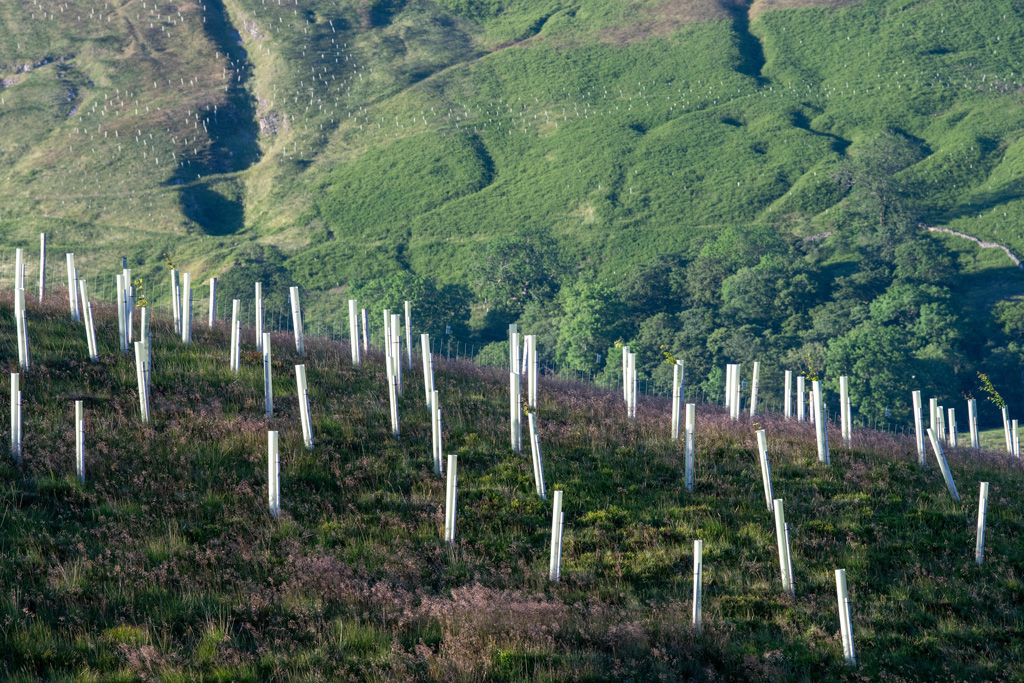
(Agriculture is a devolved issue, meaning that most of the bill will not affect farmers in Scotland, Wales and Northern Ireland. Devolved governments have been working on their own replacements for the CAP.)
Prior to Brexit, the UK government had been vocal in its desire for CAP reform and had advocated for using “taxpayers money to pay farmers for public goods that the market otherwise would not reward, such as protecting the natural environment”.
Matthews tells Carbon Brief:
“The UK approach on paper is more radical, because they have signalled they wanted to move away from the income support payment. We will have to see to what extent the government can actually implement that policy.”
The government has three new schemes that it says will reward “environmental land management”, namely, the Sustainable Farming Incentive, Local Nature Recovery and Landscape Recovery.
These schemes are set to be rolled out over the next two years, gradually replacing basic payments from the government, which will end completely in 2027.
In May, the government released its peat and tree strategies for England, which emphasised the importance of these schemes in driving its significant tree-planting and peat-restoration targets.
Environmental campaigners have broadly welcomed the shift to a “public money for public goods” approach and UK government adviser the Climate Change Committee (CCC) stated in a 2020 report that “a shift in the subsidy system towards the delivery of environmental benefits is needed”.
To achieve the UK’s net-zero emissions target, the CCC says there should be a “high take-up” of practices that cut non-CO2 emissions, as well as a fifth of farmland being converted into forests, peatland and energy crops.
There are concerns that the new payment system alone will not be enough to encourage such practices on English farms, particularly as the government pushes trade deals with nations such as Australia, where environmental standards are already lower.
-
Q&A: Will EU Common Agricultural Policy reforms help tackle climate change?
-
Q&A: Will EU Common Agricultural Policy reforms help reduce emissions?

